Alerta
Alertas
Tipo de práctica
En barco
A pie
Muy fácil
En bicicleta
En coche
Presentación
Mapa
Pasos
Puntos de interés
Resumen de Cirkwi
Calificaciones y reseñas
Ver alrededor
Las estatuas de los puentes de París.

Crédito : Remi Jouan
El resumen de Cirkwi
Descubre las estatuas históricas de los puentes de París: un viaje único
Los puentes parisinos, embellecidos con estatuas que narran historias del pasado de la ciudad, ofrecen una experiencia irrepetible de paseo. Propuesto por Balades Fluviales Fabienne Lemoine Fondateur, este itinerario no es solo una caminata, sino un viaje en el tiempo que revela los tesoros artísticos y culturales de París desde la época en que la construcción de puentes era tanto sobre belleza como utilidad. Al embarcarse en esta ruta panorámica, uno se adentra en una exploración que se conecta con el alma de la ciudad a través de sus guardianes monumentales. Siente la brisa del Sena y permite que las figuras silenciosas guíen tu descubrimiento.
Descripción técnica de la ruta
Con una longitud total de 8,08 kilómetros y una variación de elevación entre 27 y 38 metros, esta ruta plantea una interesante combinación de ascensos y descensos suaves, con un ascenso positivo total de 125 metros. Diseñado para caminar, este circuito ofrece un viaje envolvente pero físicamente moderado a través de París, adecuado para participantes de diferentes niveles de condición física. Destacando las estatuas de los puentes parisinos, el camino propuesto por Balades Fluviales guía a los exploradores a través de maravillas históricas y arquitectónicas, presentando un aspecto fascinante de la ornamentación urbana.
Consejos estacionales para los exploradores de estatuas en los puentes
Explorar los puentes estatuarios de París es encantador en cualquier época del año, pero cada estación tiene sus peculiaridades. En primavera, las flores en flor añaden un telón de fondo pintoresco, pero también se esperan lluvias ocasionales; lleva siempre un paraguas. Los veranos son ideales pero pueden estar concurridos; las caminatas por la mañana son preferibles. El otoño dota al paisaje de un tono dorado, perfecto para la fotografía, aunque la luz de la tarde desaparece rápidamente; planifica en consecuencia. Los inviernos, aunque fríos, ofrecen una experiencia serena con menos gente; vestirse abrigado es clave. En términos de seguridad, siempre mantente en los senderos peatonales y ten cuidado con las superficies resbaladizas en condiciones de lluvia.
El corazón cultural de Francia
París, situada dentro de la región de Île-de-France, no solo es la capital de Francia, sino también un faro de importancia cultural e histórica en todo el mundo. Los puentes de la ciudad, que encarnan maravillas artísticas e ingenieriles desde el siglo XIX, funcionan como conectores vitales no solo entre las orillas del río, sino también a través del tiempo. Cada estatua cuenta parte del pasado legendario de París, desde relatos de santos patronos hasta eventos monumentales. Explorar estos puentes permite recorrer el corazón de la ciudad, comprender su evolución y encanto perdurable.
Información climática para los visitantes de París
París: Un clima continental suave te espera. París tiene un clima templado, caracterizado por veranos suaves e inviernos frescos. Los meses ideales para visitar abarcan desde abril hasta junio y desde septiembre hasta octubre, cuando las condiciones climáticas son más favorables para explorar al aire libre. Espera temperaturas medias que oscilan entre 15°C y 25°C en estos períodos, proporcionando un ambiente cómodo para recorridos de estatuas en los puentes. En verano, las temperaturas pueden llegar hasta los 30°C, lo que puede tener un impacto en las actividades al aire libre al mediodía. Los inviernos, aunque más fríos, rara vez experimentan descensos drásticos por debajo de los 0°C, pero se recomienda empacar para condiciones variables.
Los puentes parisinos, embellecidos con estatuas que narran historias del pasado de la ciudad, ofrecen una experiencia irrepetible de paseo. Propuesto por Balades Fluviales Fabienne Lemoine Fondateur, este itinerario no es solo una caminata, sino un viaje en el tiempo que revela los tesoros artísticos y culturales de París desde la época en que la construcción de puentes era tanto sobre belleza como utilidad. Al embarcarse en esta ruta panorámica, uno se adentra en una exploración que se conecta con el alma de la ciudad a través de sus guardianes monumentales. Siente la brisa del Sena y permite que las figuras silenciosas guíen tu descubrimiento.
Descripción técnica de la ruta
Con una longitud total de 8,08 kilómetros y una variación de elevación entre 27 y 38 metros, esta ruta plantea una interesante combinación de ascensos y descensos suaves, con un ascenso positivo total de 125 metros. Diseñado para caminar, este circuito ofrece un viaje envolvente pero físicamente moderado a través de París, adecuado para participantes de diferentes niveles de condición física. Destacando las estatuas de los puentes parisinos, el camino propuesto por Balades Fluviales guía a los exploradores a través de maravillas históricas y arquitectónicas, presentando un aspecto fascinante de la ornamentación urbana.
Consejos estacionales para los exploradores de estatuas en los puentes
Explorar los puentes estatuarios de París es encantador en cualquier época del año, pero cada estación tiene sus peculiaridades. En primavera, las flores en flor añaden un telón de fondo pintoresco, pero también se esperan lluvias ocasionales; lleva siempre un paraguas. Los veranos son ideales pero pueden estar concurridos; las caminatas por la mañana son preferibles. El otoño dota al paisaje de un tono dorado, perfecto para la fotografía, aunque la luz de la tarde desaparece rápidamente; planifica en consecuencia. Los inviernos, aunque fríos, ofrecen una experiencia serena con menos gente; vestirse abrigado es clave. En términos de seguridad, siempre mantente en los senderos peatonales y ten cuidado con las superficies resbaladizas en condiciones de lluvia.
El corazón cultural de Francia
París, situada dentro de la región de Île-de-France, no solo es la capital de Francia, sino también un faro de importancia cultural e histórica en todo el mundo. Los puentes de la ciudad, que encarnan maravillas artísticas e ingenieriles desde el siglo XIX, funcionan como conectores vitales no solo entre las orillas del río, sino también a través del tiempo. Cada estatua cuenta parte del pasado legendario de París, desde relatos de santos patronos hasta eventos monumentales. Explorar estos puentes permite recorrer el corazón de la ciudad, comprender su evolución y encanto perdurable.
Información climática para los visitantes de París
París: Un clima continental suave te espera. París tiene un clima templado, caracterizado por veranos suaves e inviernos frescos. Los meses ideales para visitar abarcan desde abril hasta junio y desde septiembre hasta octubre, cuando las condiciones climáticas son más favorables para explorar al aire libre. Espera temperaturas medias que oscilan entre 15°C y 25°C en estos períodos, proporcionando un ambiente cómodo para recorridos de estatuas en los puentes. En verano, las temperaturas pueden llegar hasta los 30°C, lo que puede tener un impacto en las actividades al aire libre al mediodía. Los inviernos, aunque más fríos, rara vez experimentan descensos drásticos por debajo de los 0°C, pero se recomienda empacar para condiciones variables.
Generado automáticamente.
IGN tarjetas
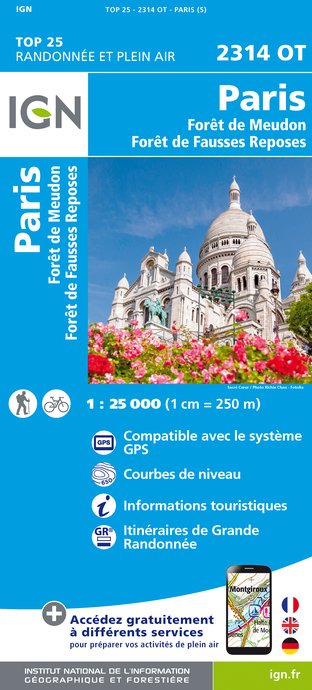
2314OT - PARIS FORÊT DE MEUDON FORÊT DE FAUSSES REPOSES
Editora : IGN
Recopilación : TOP 25 ET SÉRIE BLEUE
Escalera : 1:25 000
13.90€

119 PARIS SENS PNR DU GÂTINAIS FRANÇAIS
Editora : IGN
Recopilación : TOP 100
Escalera : 1:100 000
8.40€

190 PARIS CHANTILLY FONTAINEBLEAU
Editora : IGN
Recopilación : TOP 100
Escalera : 1:100 000
8.40€

118 PARIS CHARTRES PNR DE LA HAUTE VALLÉE DE CHEVREUSE
Editora : IGN
Recopilación : TOP 100
Escalera : 1:100 000
8.40€
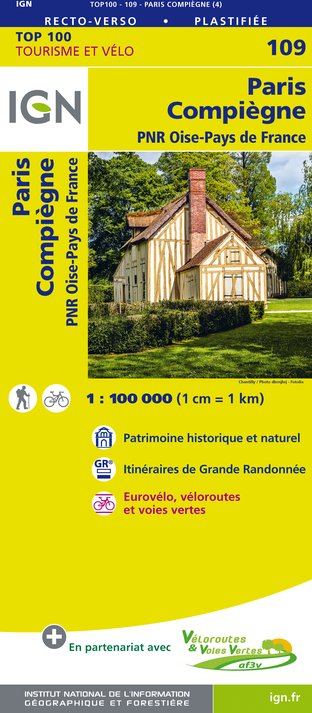
109 PARIS COMPIÈGNE PNR OISE-PAYS DE FRANCE
Editora : IGN
Recopilación : TOP 100
Escalera : 1:100 000
8.40€
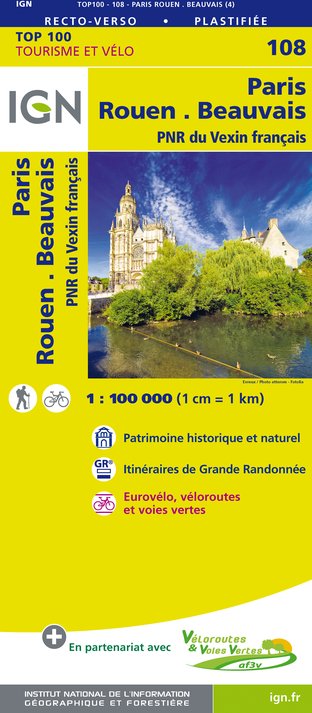
108 PARIS ROUEN BEAUVAIS PNR DU VEXIN FRANÇAIS
Editora : IGN
Recopilación : TOP 100
Escalera : 1:100 000
8.40€
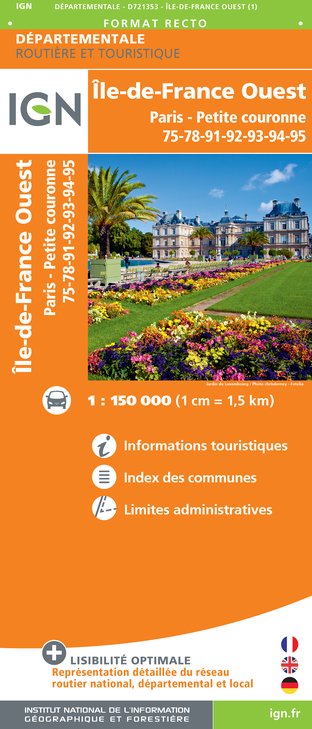
D75-95 ÎLE-DE-FRANCE OUEST
Editora : IGN
Recopilación : CARTES DÉPARTEMENTALES IGN
Escalera : 1:150 000
5.90€
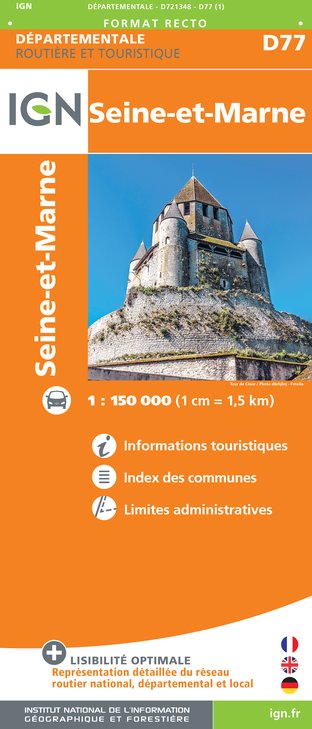
D77 SEINE-ET-MARNE
Editora : IGN
Recopilación : CARTES DÉPARTEMENTALES IGN
Escalera : 1:150 000
5.90€

NR08 CENTRE-VAL DE LOIRE
Editora : IGN
Recopilación : CARTES RÉGIONALES IGN
Escalera : 1:250 000
6.80€

NR03 ÍLE DE FRANCE
Editora : IGN
Recopilación : CARTES RÉGIONALES IGN
Escalera : 1:250 000
6.80€

NR01 HAUTS-DE-FRANCE
Editora : IGN
Recopilación : CARTES RÉGIONALES IGN
Escalera : 1:250 000
6.80€
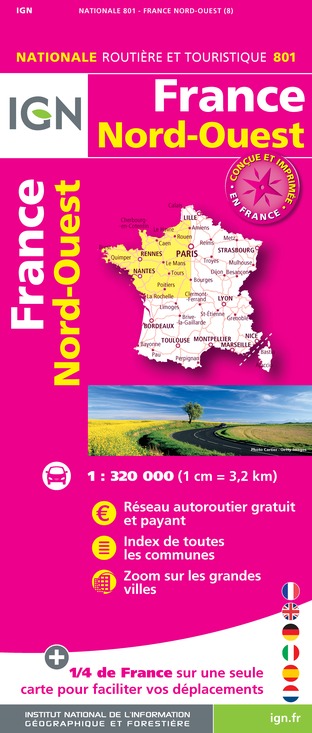
801 FRANCE NORD OUEST
Editora : IGN
Recopilación : CARTES NATIONALES IGN
Escalera : 1:320 000
6.10€

EUROPE
Editora : IGN
Recopilación : DÉCOUVERTE DES PAYS DU MONDE IGN
Escalera : 1:2 500 000
7.00€
Informaciónes técnicas
En barco
Dificultad
No especificada
Dist.
8.1 km
Tipo de práctica
En barco
A pie
Muy fácil
En bicicleta
En coche
Mostrar más
Perfil altimétrico
Punto de partida
75004
Paris
Lat : 48.8506677Lng : 2.3555267
Puntos de interés
Autor de los datos
Calificaciones y reseñas
Para ver alrededor










